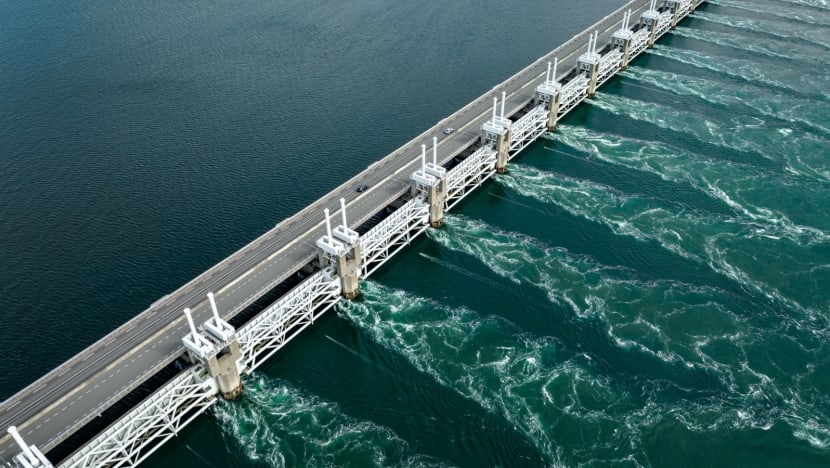Adaptation and resilience: An investment opportunity in a changing world
As climate risks intensify, investors are tapping into the market potential of solutions that help protect assets and mitigate socio-economic loss.

2024 is now the hottest year on record, with global temperatures 1.55°C above pre-industrial levels. Photos: BCG

This audio is generated by an AI tool.
Around the world, extreme weather events are increasingly affecting communities, industries and businesses – from blizzards in the United States and cyclones in the Bay of Bengal to rising sea levels in Singapore that have prompted plans for the large-scale Long Island reclamation project for coastal protection.
These climate-related events are expected to become even more frequent and severe. Global temperatures have now risen by 1.55°C above pre-industrial levels, making 2024 the hottest year on record.
While mitigation remains essential, there is a growing urgency to protect communities and assets – making climate adaptation and resilience just as important. This comes amid shifting geopolitical priorities, with some governments and companies showing signs of scaling back on climate goals, said Mr Daniel Oehling, managing director and partner at Boston Consulting Group (BCG). BCG recently teamed up with Temasek on a report titled The Private Equity Opportunity in Climate Adaptation and Resilience.
With global spending on climate adaptation and resilience expected to exceed US$1 trillion (S$1.29 trillion) by 2030 and more companies offering scalable, high-demand solutions, the report spotlights this field as a compelling opportunity for private equity investment.
CONNECTING CAPITAL WITH CLIMATE ADAPTATION AND RESILIENCE SOLUTIONS
Despite the potential, private equity investors have been slow to act, with adaptation and resilience making up less than 10 per cent of total climate-related investments last year.
One reason is the belief that safeguarding infrastructure and social systems falls primarily to governments and non-governmental organisations, said Mr Oehling. “In reality, many of the assets at risk, the corresponding economic impact and the solutions needed lie in the private sector. That’s where commercial investors can find meaningful value pools and long-term potential.”
Some investors are held back by unfamiliarity with this emerging space and concerns about technology risks, assuming it is dominated by early-stage outfits without stable business models and cash flows. Others struggle to act, as solution providers are often embedded within traditional industries like engineering and construction, making them harder to identify as climate adaptation and resilience companies.
To help investors better understand the landscape, the report introduces the Climate Adaptation and Resilience Investment Opportunity Map – a three-layered framework that breaks down the sector into seven impact themes, such as water, infrastructure and agriculture. These themes are further divided into over 50 subsectors – ranging from seawater desalination to wildfire management – and showcase hundreds of practical solutions that span modular flood barriers to smart meters.
Mr Oehling said the team used a scoring model that combines current and forward-looking indicators of private and public sector demand, as well as investor activity, to identify subsectors with strong near-term potential. “This is the first time a tool this comprehensive has been built from a private equity perspective,” he shared.
THREE PROMISING AREAS IN CLIMATE ADAPTATION AND RESILIENCE

While many investment opportunities in climate adaptation and resilience are still early-stage, the report identifies six segments with strong pipelines of companies that have proven business models, operational scale and steady cash flows – qualities growth and later-stage investors often seek, noted Mr Oehling.
Among the six segments, three stand out. The first is climate-resilient building materials – including insulation and waterproof coatings – that are seeing rising demand as mean temperatures climb and extreme weather becomes more common. Mr Oehling expects interest in this area to gather steam, driven by regulations like Australia’s National Construction Code, which encourages the use of materials designed to withstand climate hazards.
The second is climate analytics and early warning systems, a domain that has expanded rapidly over the past three years. Companies are developing tools with enhanced capabilities – from artificial intelligence-powered weather analytics and hazard detection to catastrophe modelling – that are increasingly used across fields such as agriculture, insurance and supply chain management.
“New regulations, among them climate disclosure laws in the European Union, Singapore, Hong Kong and the United Kingdom, are also driving demand as companies adopt these tools to better understand their climate risk exposures,” added Mr Oehling.
The third is climate-adapted agricultural inputs. This refers to resilient crops, stress protection products and advanced fertilisers that help reduce the impact of extreme weather on crop yields. Mr Oehling said this segment is likely to grow as synthetic biology gains wider regulatory acceptance and the industry shifts towards biologicals.
“These three subsectors show the kinds of practical options already available to investors,” said Mr Oehling. “There are at least 20 others worth exploring.”
WHY PRIVATE EQUITY MATTERS IN CLIMATE RESILIENCE
Tapping into these high-potential areas takes more than just capital. In climate adaptation and resilience, private equity investors can bring valuable expertise in scaling businesses and unlocking value. Their involvement can help solution providers grow efficiently and ensure a steady supply of products to meet rising demand.
“This is a moment of convergence – where doing good and doing well go hand in hand,” said Mr Oehling. “By acting now, investors can help build a more resilient world while gaining a foothold in one of the defining markets of the future.”
Actions taken today can help mitigate the harsh impacts of climate change on tomorrow’s societies and businesses. Explore the investment potential of climate adaptation and resilience solutions and how they contribute to a future-ready portfolio.















